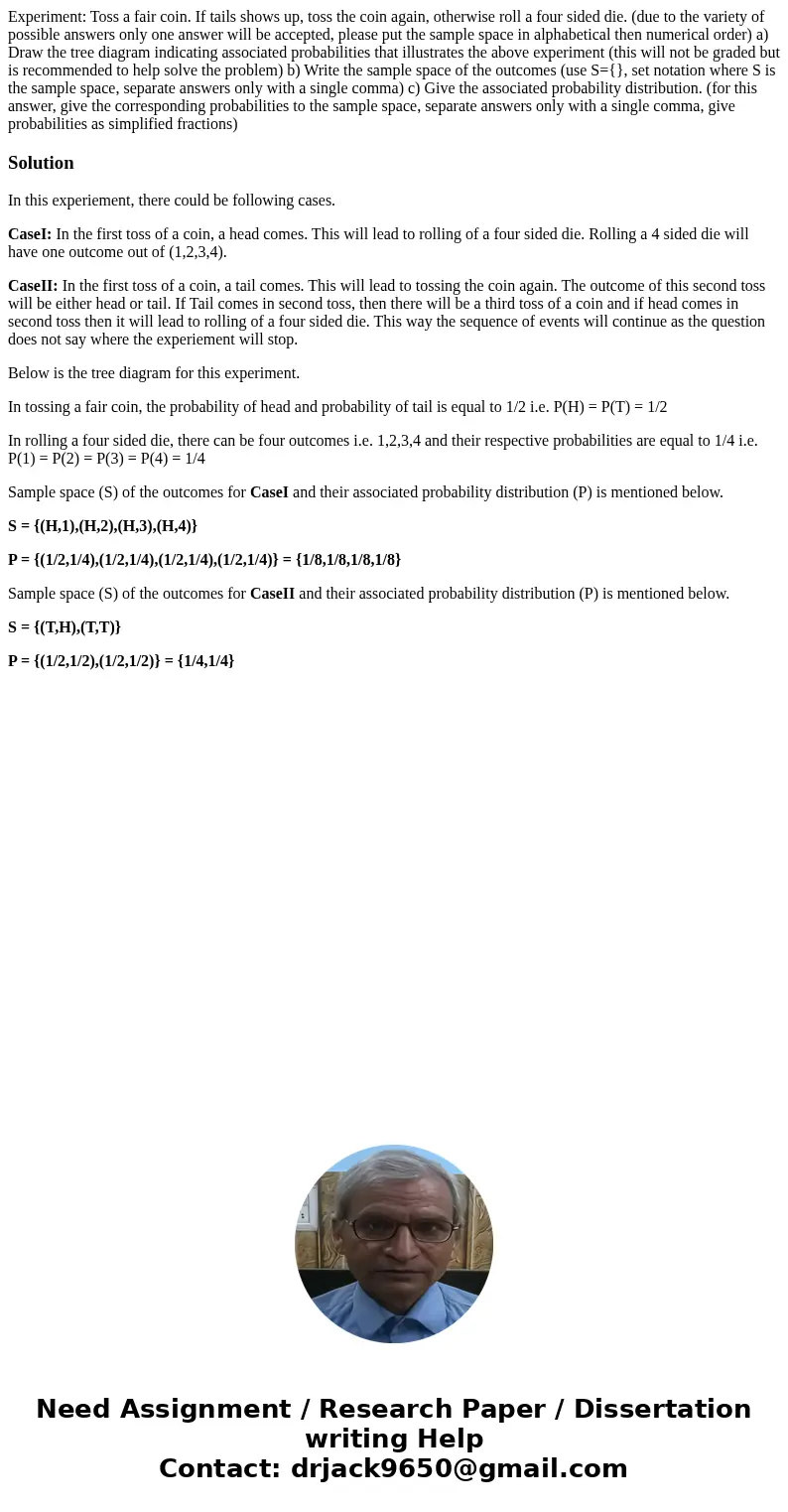Experiment Toss a fair coin If tails shows up toss the coin
Experiment: Toss a fair coin. If tails shows up, toss the coin again, otherwise roll a four sided die. (due to the variety of possible answers only one answer will be accepted, please put the sample space in alphabetical then numerical order) a) Draw the tree diagram indicating associated probabilities that illustrates the above experiment (this will not be graded but is recommended to help solve the problem) b) Write the sample space of the outcomes (use S={}, set notation where S is the sample space, separate answers only with a single comma) c) Give the associated probability distribution. (for this answer, give the corresponding probabilities to the sample space, separate answers only with a single comma, give probabilities as simplified fractions)
Solution
In this experiement, there could be following cases.
CaseI: In the first toss of a coin, a head comes. This will lead to rolling of a four sided die. Rolling a 4 sided die will have one outcome out of (1,2,3,4).
CaseII: In the first toss of a coin, a tail comes. This will lead to tossing the coin again. The outcome of this second toss will be either head or tail. If Tail comes in second toss, then there will be a third toss of a coin and if head comes in second toss then it will lead to rolling of a four sided die. This way the sequence of events will continue as the question does not say where the experiement will stop.
Below is the tree diagram for this experiment.
In tossing a fair coin, the probability of head and probability of tail is equal to 1/2 i.e. P(H) = P(T) = 1/2
In rolling a four sided die, there can be four outcomes i.e. 1,2,3,4 and their respective probabilities are equal to 1/4 i.e. P(1) = P(2) = P(3) = P(4) = 1/4
Sample space (S) of the outcomes for CaseI and their associated probability distribution (P) is mentioned below.
S = {(H,1),(H,2),(H,3),(H,4)}
P = {(1/2,1/4),(1/2,1/4),(1/2,1/4),(1/2,1/4)} = {1/8,1/8,1/8,1/8}
Sample space (S) of the outcomes for CaseII and their associated probability distribution (P) is mentioned below.
S = {(T,H),(T,T)}
P = {(1/2,1/2),(1/2,1/2)} = {1/4,1/4}

 Homework Sourse
Homework Sourse